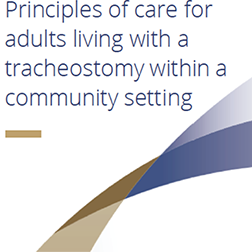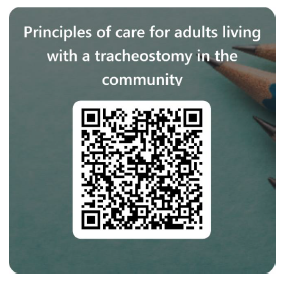Improving Tracheostomy Care

Historically few patients with a tracheostomy tube in situ were discharged into the community setting but the number is rising. The demographics of the long-term tracheostomy population have changed too. This is primarily due to improved treatment and survival from traumatic brain injury, the development of portable ventilators, an increase in the number of infants born requiring respiratory support surviving to hospital discharge, and improvements in the treatment of head & neck cancers.Given this rise in number and clinical complexity of people living in the community with long-term tracheostomies, there is a need to ensure that there are equivalent resources available as per hospital-based care. These resources are designed to support people to live as independently as possible, and support those providing care for the patient with a tracheostomy. The Principles of Care resources have been designed to ensure that the key messages are clear but to allow individual nuances for people with tracheostomies as well as the differing services available to patients with tracheostomies across the United Kingdom.
The purpose of this document is to augment existing guidance as well as to provide support for those NHS organisations who do not have community-based guidance in place. The aim is to support organisations to appropriately plan discharge from hospital and develop community care plans for a person living with a tracheostomy. The contents and themes will also be used to support the creation of educational content.
You can access the resource documents by clicking the document links below.
The project was led by Paul Twose and colleagues based in Cardiff and Vale University Health Board. The full list of contributors and stakeholders is detailed in the main document.
Please click this link or scan the QR code if you want to send feedback to the team.
